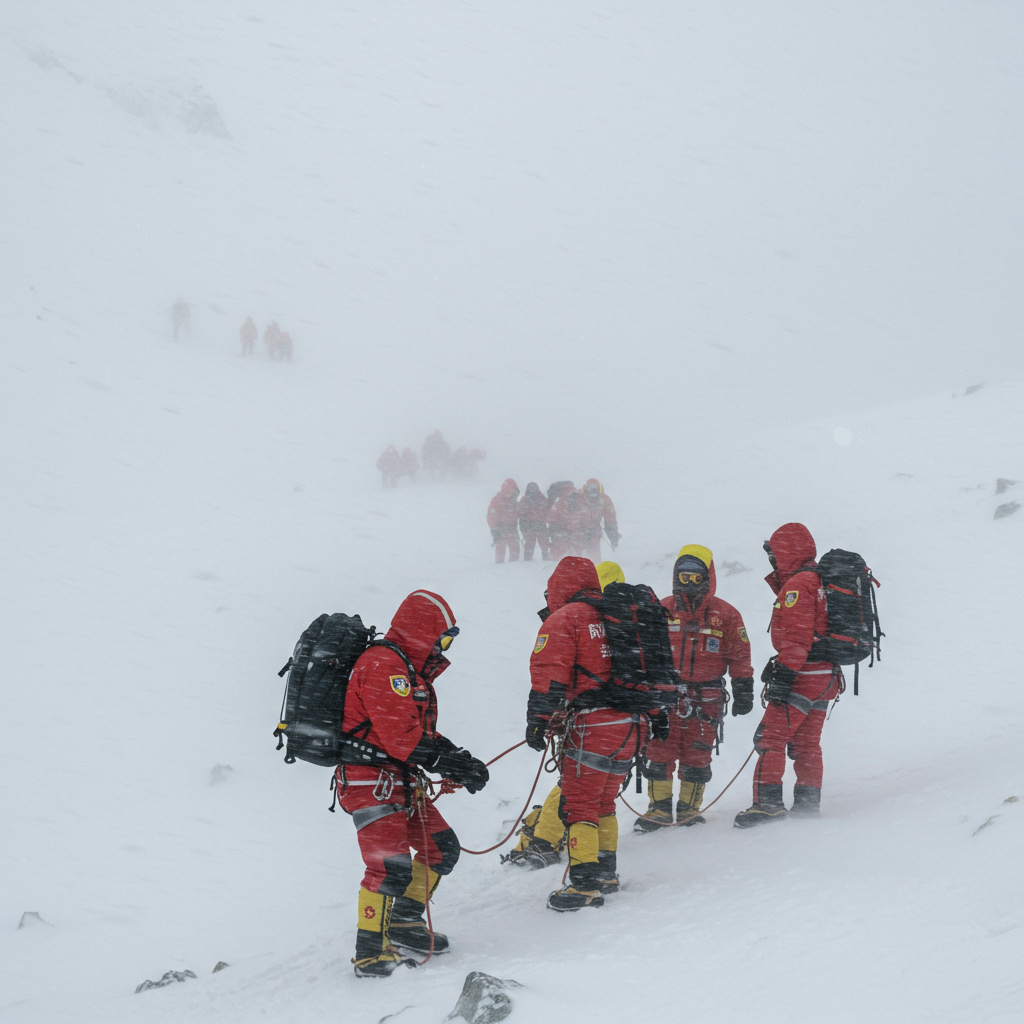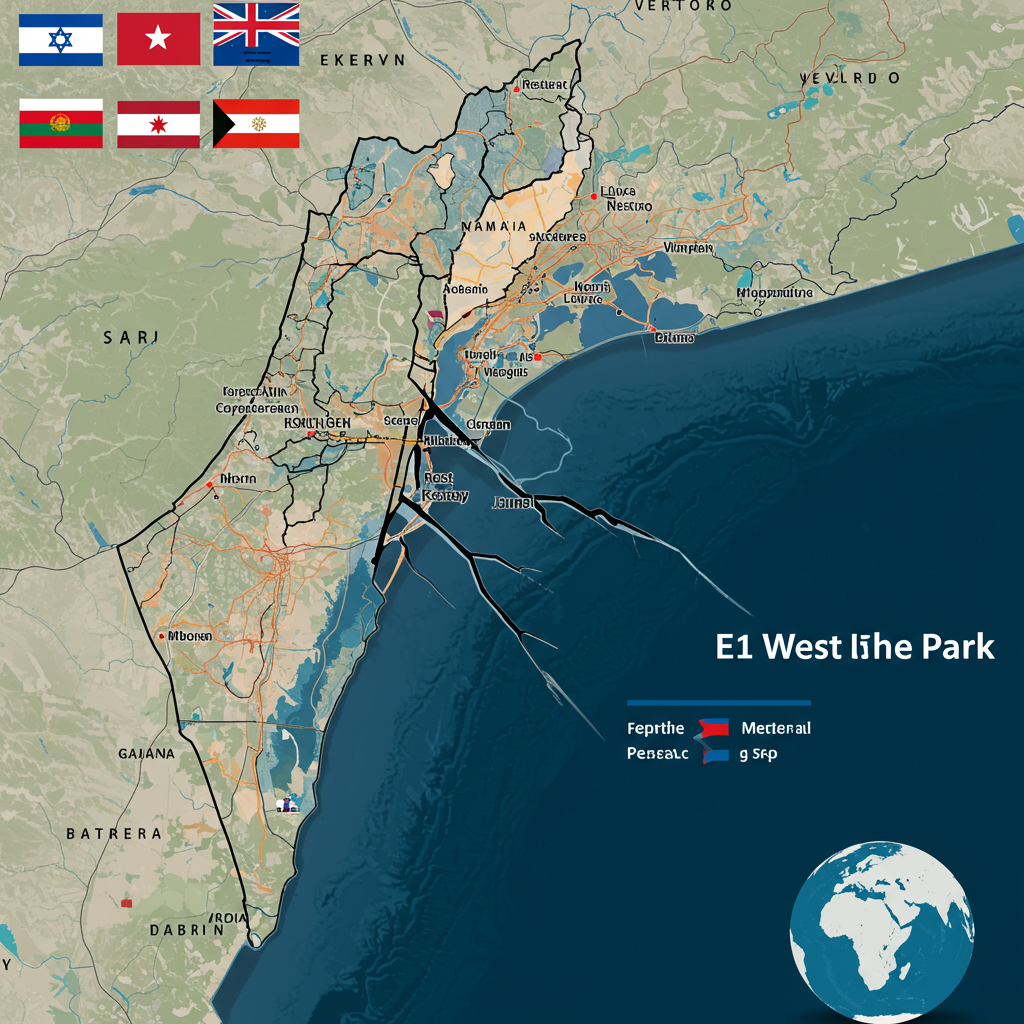A devastating blizzard recently descended upon Mount Everest’s eastern slopes, trapping hundreds of hikers and triggering a massive rescue operation in China’s Tibet Autonomous Region. This unexpected and fierce snowstorm, striking during a popular trekking period, has underscored the immense dangers of high-altitude environments, even for experienced adventurers. As rescuers battle treacherous conditions, the incident serves as a stark reminder of Everest’s raw power and the critical need for preparedness.
Breaking News: Harrowing Blizzard Traps Hundreds on Everest’s Eastern Slopes
An unusually severe snowstorm, characterized as a blizzard, swept across the eastern face of Mount Everest in Tibet, China, during the first weekend of October. The extreme weather event caught numerous trekkers by surprise, occurring amidst China’s eight-day National Day holiday, a time typically favored for clear skies and stunning Himalayan views. Snowfall commenced on the evening of October 3rd and intensified throughout the following day, quickly creating perilous conditions.
Initial reports from Chinese state media CCTV indicated at least 200 hikers were stranded, with China’s state-backed Jimu News later suggesting approximately 1,000 individuals were caught in the blizzard. Tragically, one 41-year-old male hiker succumbed to a combination of hypothermia and acute altitude sickness, as confirmed by Xinhua, another Chinese state media outlet. The incident unfolded primarily in the remote Karma Valley, which serves as a gateway to Everest’s eastern Kangshung face. This area, popular for its scenic hiking trails, saw elevations exceeding 16,000 feet (4,900 meters) become impassable due to the heavy snowfall.
The Unfolding Rescue: Battling Extreme Conditions
A large-scale rescue operation was immediately launched, mobilizing hundreds of local villagers and professional rescue teams. Their efforts faced significant challenges, including deep snow, freezing temperatures, and roads blocked or washed out by the storm. Despite these obstacles, rescuers managed to guide around 350 hikers to safety, relocating them to Qudang, a small township situated near Everest’s eastern slope. Authorities swiftly suspended ticket sales and entry to the Everest Scenic Area to prevent further individuals from entering the hazardous zones.
Eyewitness accounts paint a vivid picture of the harrowing experience. Nature photographer Dong Shuchang, on a trek to capture the Himalayan landscape, described constant lightning, thunderstorms, and snowfall so heavy he could barely sleep. His group, at 4,600 meters, found their windbreakers and raincoats no match for the wet snow, leading to several members showing signs of hypothermia. Dong, an experienced climber, stated he had “never experienced weather like this,” detailing a treacherous retreat where he frequently fell on slippery, ice-covered routes. Similarly, hiker Chen Geshuang described a “nerve-wracking night,” noting snow up to a meter deep by Sunday morning. Another hiker, Eric Wen, reported his group had to clear snow from their tents every ten minutes to prevent collapse, making sleep almost impossible.
Why October’s “Peak Season” Turned Perilous
October is generally considered a prime time for trekking and climbing in the Everest region. This period typically follows the Indian monsoon season, offering stable, clear skies and more moderate temperatures, making it a popular window for visitors, including the thousands of Chinese tourists who flock to the area during the National Day “Golden Week” holiday. The severity and timing of this blizzard were therefore highly unusual and unexpected.
This particular Mount Everest blizzard stands out as a departure from typical weather patterns. Mountaineer and Everest coach Alan Arnette emphasized the rarity of such a large-scale disaster during this specific time of year. This extreme weather event in the Everest region is part of a broader pattern of severe climatic events impacting the wider Himalayan region. Notably, neighboring Nepal simultaneously experienced torrential rains and floods, resulting in significant infrastructure damage and numerous fatalities. While distinct from the Everest snowstorm, these regional incidents underscore the increasing unpredictability and potential devastation of natural challenges in these high-altitude environments.
Understanding the Dangers: Hypothermia and Altitude Sickness
For those caught in such extreme conditions on Mount Everest, the risks are immediate and profound. The reported death of the 41-year-old hiker due to hypothermia and acute altitude sickness highlights these critical dangers. Hypothermia occurs when the body loses heat faster than it can generate it, often from prolonged exposure to cold weather or water. Symptoms can escalate rapidly, leading to disorientation, loss of consciousness, and eventually organ failure if not treated promptly. Many rescued hikers received treatment for hypothermia, underscoring its prevalence during the blizzard.
Acute altitude sickness (AMS), and its more severe forms, High Altitude Cerebral Edema (HACE) and High Altitude Pulmonary Edema (HAPE), are constant threats at Everest’s elevations. These conditions result from the body’s inability to adapt to reduced oxygen levels. Symptoms range from headaches and nausea to severe disorientation, fluid in the lungs, and brain swelling, which can be fatal. The combination of intense cold, physical exertion, and lack of oxygen creates a deadly cocktail for unprepared or trapped individuals. According to the Himalayan Database, over 340 people have died on Mount Everest throughout its history, with more than 200 bodies still remaining on its treacherous slopes due to the logistical difficulties, risks, and costs of retrieval.
Navigating the World’s Highest Mountain: The Everest Landscape
Mount Everest, standing at 29,032 feet (8,848 meters) high, is the world’s highest mountain. It forms part of the majestic Himalayan mountain range, straddling the border between Nepal and China’s Tibet Autonomous Region. The mountain’s allure attracts thousands each year, from seasoned mountaineers aiming for the summit to trekkers seeking to experience its legendary beauty from lower altitudes.
The Karma Valley, where many hikers were stranded, is particularly renowned for its breathtaking views of the eastern Kangshung face. This remote area, while popular, demands respect for its challenging terrain and rapidly changing weather conditions. While this incident primarily involved trekkers in valleys and lower camps, the presence of various climbing camps further up the mountain underscores the constant human activity and associated risks across Everest’s vast landscape. Approximately 374 climbers from 49 countries had successfully scaled the mountain in the current year prior to this incident, a testament to its enduring draw despite its inherent perils.
Lessons from the Blizzard: Enhancing Mountain Safety
This Everest blizzard serves as a powerful cautionary tale about the unpredictable nature of high-altitude environments. For anyone contemplating a trek or climb in the Himalayas, preparedness is paramount. This includes carrying appropriate cold-weather and waterproof gear, meticulously monitoring weather forecasts, and understanding the symptoms of hypothermia and altitude sickness. Engaging experienced local guides who possess intimate knowledge of the terrain and local weather patterns is also crucial.
Moreover, flexibility in travel plans and a willingness to turn back when conditions deteriorate can be life-saving. The swift action of suspending entry to the Everest Scenic Area and the extensive mobilization of rescue efforts highlight the scale of resources required when things go wrong in such remote and challenging locations. As global weather patterns become more erratic, understanding and respecting the mountains’ volatility is more critical than ever.
Frequently Asked Questions
What Dangers Do Hikers Face During an Unexpected Blizzard on Mount Everest?
Hikers caught in an unexpected blizzard on Mount Everest face multiple severe dangers. The primary threats include hypothermia, where the body loses heat faster than it generates it, potentially leading to organ failure. Acute altitude sickness (AMS) is also a major risk, as reduced oxygen can cause headaches, nausea, disorientation, and even fatal brain or lung swelling. Deep snow, reaching up to one meter in this incident, makes movement extremely difficult, increases the risk of falls and exhaustion, and can lead to tents collapsing. Freezing temperatures, high winds, and limited visibility further complicate survival and rescue efforts, turning the majestic mountain into a deadly trap.
Where Exactly on Mount Everest Did This Blizzard Trap Hikers?
The blizzard primarily trapped hikers on the eastern slopes of Mount Everest, within China’s Tibet Autonomous Region. Specifically, many individuals were stranded in the remote Karma Valley, which leads towards Everest’s eastern Kangshung face. This area is known for its scenic hiking trails at elevations exceeding 16,000 feet (4,900 meters). Rescued hikers were often guided to the small township of Qudang, located near Everest’s eastern slope, indicating this region was the focal point of the emergency and rescue operations during the severe storm.
How Can Trekkers Better Prepare for Unpredictable Weather on Mount Everest?
To better prepare for unpredictable weather on Mount Everest, trekkers should prioritize comprehensive planning and gear. This includes investing in high-quality, layered cold-weather clothing, waterproof and windproof outerwear, and sturdy, insulated boots. Always carry an emergency kit with a first-aid supply, a satellite phone or reliable communication device, and enough food and water. Crucially, continuously monitor detailed, real-time weather forecasts, as mountain conditions can change rapidly. Engaging experienced local guides is invaluable for their expertise in terrain and weather patterns. Maintaining flexibility in itineraries and being willing to turn back if conditions deteriorate are essential for safety, even during typically “peak” seasons like October.
Conclusion: A Reminder of Everest’s Raw Power
The recent Mount Everest blizzard vividly illustrates the unpredictable and formidable nature of the world’s highest peak. While the mountain continues to beckon adventurers, this incident serves as a critical reminder that even during supposedly optimal seasons, extreme weather can strike without warning. The collective efforts of rescuers and the resilience of those trapped highlight the human spirit in adversity. Ultimately, respecting Everest’s raw power and prioritizing rigorous preparation and safety measures are paramount for anyone venturing into its awe-inspiring, yet perilous, embrace.




